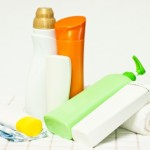
By Donna Cardillo, MA, RN, CSP, FAAN
The Food and Drug Administration (FDA) recently came out with new guidelines for the labeling and use of sunscreen products. This is based on the latest research and was done to minimize confusion and increase awareness and accuracy about ultraviolet ray protection from the sun. It is important information for each of us and those we care for. Make sure you are in the know before you hit the beach. Here are some facts about sun exposure to help you stay healthy, comfortable and looking good this summer.
UVA vs. UVB
There are two types of harmful ultraviolet radiation that come from the sun: UVA and UVB. UVA rays are the primary cause of sunburn while UVB rays are the primary cause of premature aging and wrinkling of the skin. Both types of UV rays contribute to skin cancers including the most serious type, Melanoma.
Broad Spectrum
Under the new guidelines, only those products that protect against both types of UV rays (UVA and UVB) may be labeled “broad spectrum.” And this claim has to be backed up with testing.
SPF
Sun Protection Factor (SPF) indicates the degree to which the product will protect you from UVA and/or UVB rays. Products labeled lower than SPF 15 will now have to contain a warning label advising the consumer that the product only offers protection from sunburn but not from wrinkling or cancer.
Waterproof vs. water-resistant
Many sunscreen products previously made claims, whether based in fact or not, that they were water-proof or sweat-proof. That is no longer allowed under the new guidelines. Packages must now clearly state how long the individual will receive maximum protection while swimming or exposed to the sun’s rays. Manufacturers can claim that a product is water-resistant which means it starts to wear away after about 40-60 minutes in water. Most experts agree that any sunscreen should be reapplied at least every two hours if you remain in the sun but follow the recommendations on the product label.
Additional facts:
Expiration dates
The active ingredients in any sunscreen lose their effectiveness over time. So if you have older products in your home that have no expiration date on them or newer products with an expired date, you’d best throw them out and buy new products. If you buy a product that does not have an expiration date on it, mark the date on the container with a permanent marker and discard any remaining product after three years.
Proper application
Most people apply too little sunscreen or don’t apply it often enough. Apply the amount recommended on the product container to all areas that will be exposed to sunlight to form a film. And since it takes the skin 20-30 minutes to absorb the sunscreen, apply the product at least 30 minutes before going out in the sun. Reapply according to package guidelines.
Consumer information
It’s always good to research consumer test results to see which products function best in independent studies and are the best buy. Expensive does not necessarily equal better quality with sunscreen. You can find this information online.
So slather up this summer with the right product and have fun in the sun without risking your health or your looks.
©Donna Cardillo. All rights reserved.
